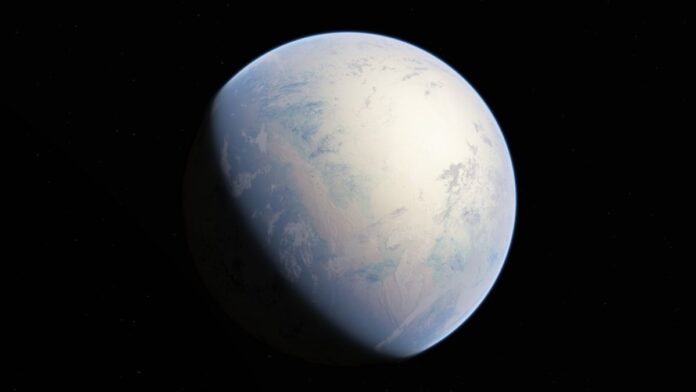650 million years ago, Earth was covered in ice during an “extreme” 15-million-year-long ice age. New research suggests that towards the end this period, Earth may not have been fully frozen, however. The findings suggest the planet was more “slushball Earth” than “Snowball Earth,” with patches of open water existing in shallow mid-latitude seas. This slushball state could have actually helped life survive during this extreme glacial period on our planet.
Researchers made the discovery when studying samples from the eastern Shennongjia Forestry District of China’s Hubei Province which dates back to the glacial period called the Marinoan glaciation, theorized to have ended between 628 million and 623 million years ago.
The Marinoan glaciation is is considered one of the most extreme ice ages Earth has experienced. “We called this ice age ‘Snowball Earth. We believed that Earth had frozen over entirely during this long ice age,” University of Cincinnati professor of geosciences, Thomas Algeo, said in a statement (opens in new tab). “But maybe it was more of a ‘Slushball Earth.'”
Related: How did Earth form?
This slushball Earth theory is based on evidence that Algeo and his colleagues discovered of a type of saltwater vegetation called benthic phototrophic macroalgae. This type of algae is found in black shale, a dark-colored, organic-rich sediment laid down in the geological record during various periods in Earth’s history. This particular black shale dates back around 600 million years, coinciding with the Marinoan glaciation.
This type of algae lives at the bottom of oceans and survives through photosynthesis, which means it needs light from the sun to convert water and carbon dioxide into energy. Lead author and China University of Geosciences researcher Huyue Song said while deep water likely did not contain oxygen to support life during this period, the shallow seas did.
This indicates that habitable ocean conditions may have been more extensive than previously thought, and extended into oceans between the tropics and the polar regions. Life in the form of single-celled and multi-celled organisms could have sheltered in these open oceans as the Earth thawed at the end of the Marinoan ice age.
“We present a new Snowball Earth model in which open waters existed in both low- and mid-latitude oceans,” Song said, adding that the Marinoan would have been punctuated with periods of melting and freezing and life could have persisted during this 15 million-year or so period.
“We found that the Marinoan glaciation was dynamic. There may have existed potential open-water conditions in the low and middle latitudes several times,” Song added. “In addition, these conditions in surface waters may have been more widespread and more sustainable than previously thought and may have allowed a rapid rebound of the biosphere after the Marinoan Snowball Earth.”
Algeo added that these refuges for life may have actually helped Earth warm and bring an end to the Marinoan Ice Age. This is because algae in the water would have released carbon dioxide, and this greenhouse gas would have then trapped heat that thawed glaciers.
“One of the general take-home messages is how much the biosphere can influence the carbon cycle and climate,” Algeo said. “We know that carbon dioxide is one of the most important greenhouse gasses. So we see how changes in the carbon cycle have an impact on the global climate.”
The research raises questions about Earth’s other glacial periods, particularly its second, the Cryogenian Period, which lasted from 720 million to 635 million years ago when the Earth is believed to have completely frozen over.
“We don’t know for sure what triggered these ice ages, but my suspicion is it was related to multicellular organisms that removed carbon from the atmosphere, leading to carbon burial and the cooling of the Earth,” Algeo concluded. “Today, we’re releasing carbon quickly in huge amounts and it is having a big impact on global climate.”
The team’s research is published in the journal Nature Communications. (opens in new tab)
Follow us on Twitter @Spacedotcom (opens in new tab) or on Facebook (opens in new tab).

